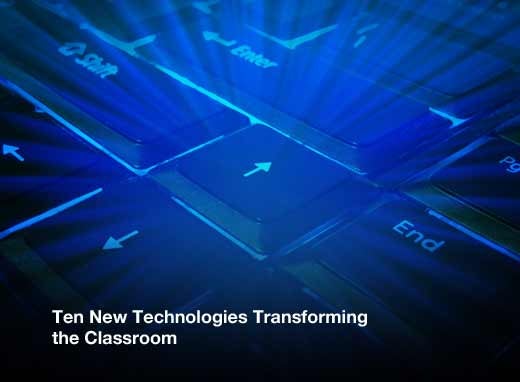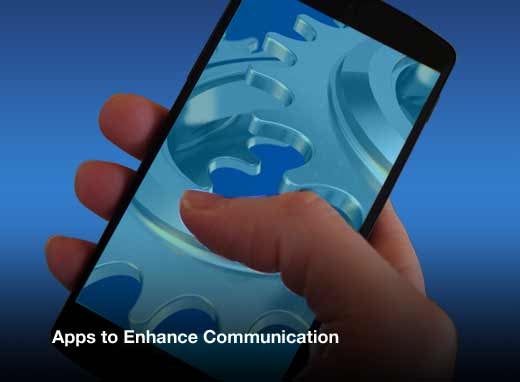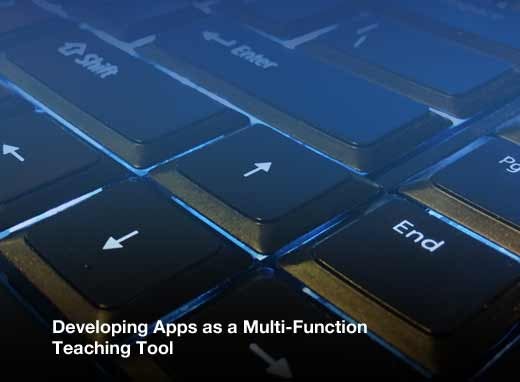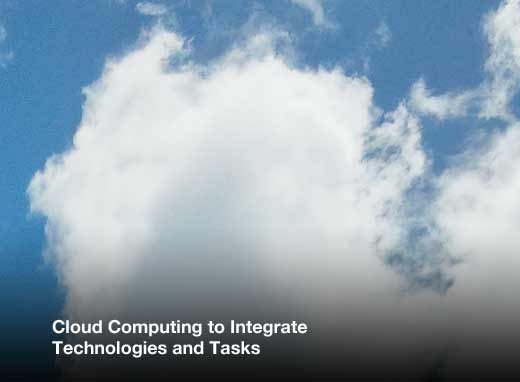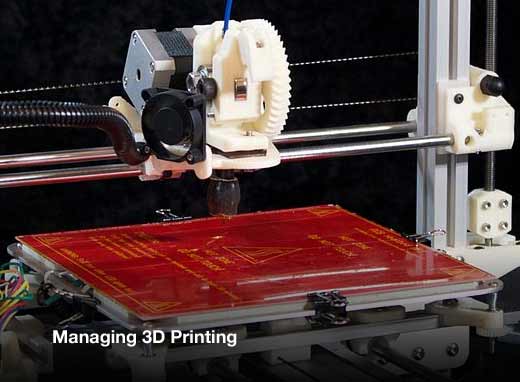Today’s college students are among the first generation who grew up with computers and cell phones and smart devices. For many of them, computers and tablets in the classroom were commonplace from elementary school through high school. Every step of their formal learning experiences involved technology, and that’s the same kind of experience they expect in the college classroom. As Lindsey Havens, senior marketing manager with PhishLabs, stated, “Technology is changing the landscape of many industries including education.”
According to CompTIA’s report, “The Changing Classroom: Perspectives from Students and Educators on the Role of Technology,” school staff said the key benefit they seek to derive from technology is to improve student performance. Other key benefits of using technology in the learning process included making learning more engaging and interesting; having real-time electronic access to student data to track performance; online learning; and helping students to keep pace in a digital economy. In addition, 75 percent of educators saw positive or very positive effects from technology when applied to the education process.
Here are ways that college professors are taking advantage of the technology students currently use and adding new technologies to enhance the teaching and learning experiences.
Ten New Technologies Transforming the Classroom
Here are 10 ways that college professors are taking advantage of the technology students currently use and adding new technologies to enhance the teaching and learning experiences.
Apps to Enhance Communication
Professors are turning to smartphone apps as a way to communicate with their students, and to encourage students to communicate and work with each other, said Jim McDade, COO of Aware360. Communications-based apps can be used by students to form study groups, find used text books, and share notes, and are used by faculty and staff to send notifications to students. Instead of leaving a note on the door to let students know class is cancelled, professors can send a message through an app.
Developing Apps as a Multi-Function Teaching Tool
George Wyner, Professor of Systems Analysis & Design in the Management and Information Systems major in the Carroll School of Management at Boston College, adopted the Mendix low-code app development platform as the primary technology used for the information systems course he teaches. “The reason for bringing it into the curriculum is two-fold, the first reason, many of my students come to my course with varied background and comfort level in coding, which can make it a challenge to ensure all students are learning core concepts without it being too simple or overwhelming depending on their skill level. The second reason is the built-in tools for collaboration and agile development. This allows students to experience team development using the scrum methodology and to gain familiarity with critical technologies and skills such as sharing code via a code repository and managing a backlog of user stories.”
3D Scanning
3D scanning is a technology that is being used in a variety of industries such as manufacturing, art, entertainment and educational purposes. It is also used by universities to teach students how to create virtual reality worlds. For example, St. Cloud State University’s Visualization Lab uses Artec 3D scanners to capture a wide range of real-world objects and expand on the university’s collection of 3D models that can be studied by students in virtual environments.
Cloud Computing to Integrate Technologies and Tasks
Students today expect to be able to communicate with professors and colleagues anywhere and on any device, moving the educational experience beyond the classroom. This is why Dena Speranza from Denison University turned away from the school’s legacy computer architecture to adopt the cloud and SaaS applications like the mobile communications platform, Dialpad. “At Denison University, we are always looking for new technologies born in the cloud that we can roll out to our entire campus – from students to professors to administrators – to help us bridge to the future and connect with today’s digital-first natives,” said Speranza. “Dialpad integrates with tools like G Suite for Education, Office 365, group messaging, text and video conferencing. Many of our athletic coaches are having great success using Dialpad to text team members and potential recruits from right within the app. Faculty and staff are also using the app while traveling to maintain their Denison presence, no matter where they are in the world.”
Video Conferencing
Universities are turning to cloud computing for improved video conferencing capabilities. “Videoconferencing allows students to benefit from the easy-to-use class materials with a distance program,” said Robert Farr, director, Public Sector Marketing with PCM-G. “Students can have the face-to-face meetings and lectures that are typical in conventional education.” For example, the University of Oregon Library System deployed broadcast and video conferencing in order to connect in real time with its various campuses throughout the state, expanding its boundaries way beyond the classroom.
Managing 3D Printing
The use of 3D printers gets a lot of press, such as engineering students who use the printing technology to make inexpensive robotic body parts for children missing a hand or arm. However, the technology surrounding the printers goes beyond the actual printing. Printers are also equipped with technology that alerts students when the printed object is complete (it is a time-consuming process, after all). Unfortunately, theft of 3D-printed objects is on the increase, so printer management technology like YSOFT BE3D EDEE is available to equip the printers with a locking system that can only be opened through a combination of the student ID card, username and password.
Virtual Reality
Virtual reality, or VR, in the classroom goes beyond Pokemon Go. Professors are using virtual reality as a way to explain theories that are more relevant to demonstrate with a visual immersion than words or simple videos.
Internet of Things
There are smart homes and smart cities, and now smart campuses, thanks to the Internet of Things (IoT). Beyond smartphones and wearable devices, IoT is being used on colleges campuses in multiple ways. Some schools are taking advantage of the vast amount of data generated through the connectivity of the devices in order to improve teaching and learning, while others use that data to make positive changes to student life experiences.
Improved Utilization of Classroom Facilities
College classrooms aren’t just for teaching. Student groups meet in them; study groups gather in them to work on projects. Finding an available and unlocked classroom isn’t easy, however. IoT and Bluetooth sensors connected to the school’s scheduling system can literally open the doors on otherwise empty and unutilized spaces.
Finding Calm
Students need to take care of their mental health while at school, but students may not have time to turn to any of the offerings available on campus. Calm.com created a platform called Calm College. Its partner schools will have full access to mindfulness workshops and guided meditation programs to help students find balance.


